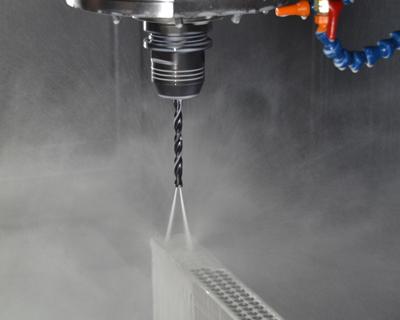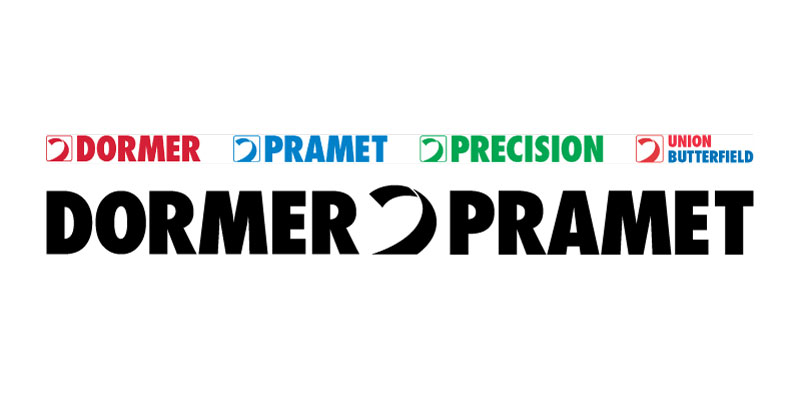
Suitable for machining a variety of materials including steel, stainless steel, cast iron, copper and aluminium, the R459 from Dormer Pramet has been specifically developed to overcome problems typically associated with deep-hole drilling. Created within the Dormer product portfolio, the R459 broadens the existing MP-X range, which already consists of 3xD and 5xD solid carbide multi-material drills. A key feature of the new drill is its Continuously Thinned Web geometry which increases both flute volume and cross sectional strength.
Ricky Payling, Dormer Pramet's application specialist for rotary tools, explains: "The combination of these elements ensures consistent forces throughout the drilling cycle, with little or no increase in power requirement as the drill penetrates deeper into the hole. This, in turn, allows increased cutting speeds and greater performance reliability without compromising tool life."
A special outer corner design provides added protection against wear and chipping, especially when under extreme conditions, such as cross drilling applications, while a specially designed 140º point angle makes for easier centring and reduces thrust requirements.
The R459 also incorporates a consistent edge preparation which protects against premature chipping and flaking. In addition, internal coolant holes allow for effective cooling of the cutting area and efficient swarf removal, minimising machine downtime. The R459 is available in diameters from 3mm to 16mm, including 0.1mm increments up to 10.0mm, and features a titanium aluminium nitride (TiAlN) coating.
Payling added: "Including an 8xD drilling option to the current MP-X range enhances our customer offer and provides a reliable, versatile and cost-effective solution."
Contact Details
Related Glossary Terms
- coolant
coolant
Fluid that reduces temperature buildup at the tool/workpiece interface during machining. Normally takes the form of a liquid such as soluble or chemical mixtures (semisynthetic, synthetic) but can be pressurized air or other gas. Because of water’s ability to absorb great quantities of heat, it is widely used as a coolant and vehicle for various cutting compounds, with the water-to-compound ratio varying with the machining task. See cutting fluid; semisynthetic cutting fluid; soluble-oil cutting fluid; synthetic cutting fluid.
- edge preparation
edge preparation
Conditioning of the cutting edge, such as a honing or chamfering, to make it stronger and less susceptible to chipping. A chamfer is a bevel on the tool’s cutting edge; the angle is measured from the cutting face downward and generally varies from 25° to 45°. Honing is the process of rounding or blunting the cutting edge with abrasives, either manually or mechanically.
- point angle
point angle
Included angle at the point of a twist drill or similar tool; for general-purpose tools, the point angle is typically 118°.
- swarf
swarf
Metal fines and grinding wheel particles generated during grinding.
- web
web
On a rotating tool, the portion of the tool body that joins the lands. Web is thicker at the shank end, relative to the point end, providing maximum torsional strength.

